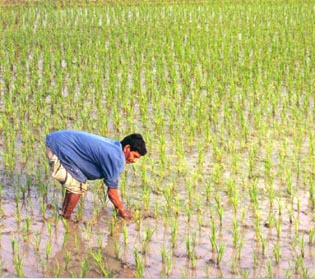
Rice Paddies are the cradle of life in many countries. But some have become conduits of death and disease because of industrial pollution.
A famous case of rice padi poisoning was documented in Toyama prefecture in Japan in the 1960s. Mining activities had polluted the region’s river with cadmium and other heavy metals. The contaminated water was then used to irrigate the padi fields. Unfortunately, rice absorbs cadmium particularly well. As a result, the contaminated crop poisoned many of the villagers, who fell ill with a devastatingly painful disease locals called itai-itai, which literally means ouch-ouch. The removal of cadmium in Toyama was just completed in March this year after almost three decades.
Such instances of rice padi pollution and poisoning, however, continues in many other countries. Currently, Blacksmith is piloting the Guixi rice padi cleanup project in Jianxi province in China. But rather than removing and replacing the contaminated soil as I believed they did in Japan, we are hoping that the method we are trying out will be easier and quicker. It involves applying lime to the soil followed with a soil amendment that consists largely of a by-product from wheat milling. This should adjust the pH of the soil so that is will “fix” the cadmium, preventing it from leaching into and contaminating the groundwater, while also preventing the toxin from traveling upwards into the rice crop.
In Jianxi province, the contamination comes from Guixi smelter, the largest copper factory in China, which started operation in the 1980s. The pollution includes copper, cadmium, arsenic, lead and other heavy metals as well as acid gas, but cadmium contamination is the most extensive.
All the soil tested had more cadmium than the agricultural standard of 0.3 mg/kg, sometimes over by a factor of 10 or more. Rice grown in the area was also tested – 100% of samples were over the cadmium standard, and 37% of the samples were over the lead standard.
15 villages with a total population of 10,000 people are affected. An estimated at 132 hectares of rice paddies and 6 hectares of vegetable farmland are contaminated. The goal of our pilot project is to find a way to make the rice paddies and farmland suitable for growing food once more, and of course, to eliminate the health threat.
We used worms to “eat” up toxins in the soil in India. We hope that a little lime and wheat by-product will do the trick in China. Read the Guixi rice padi remediation pilot study here.





